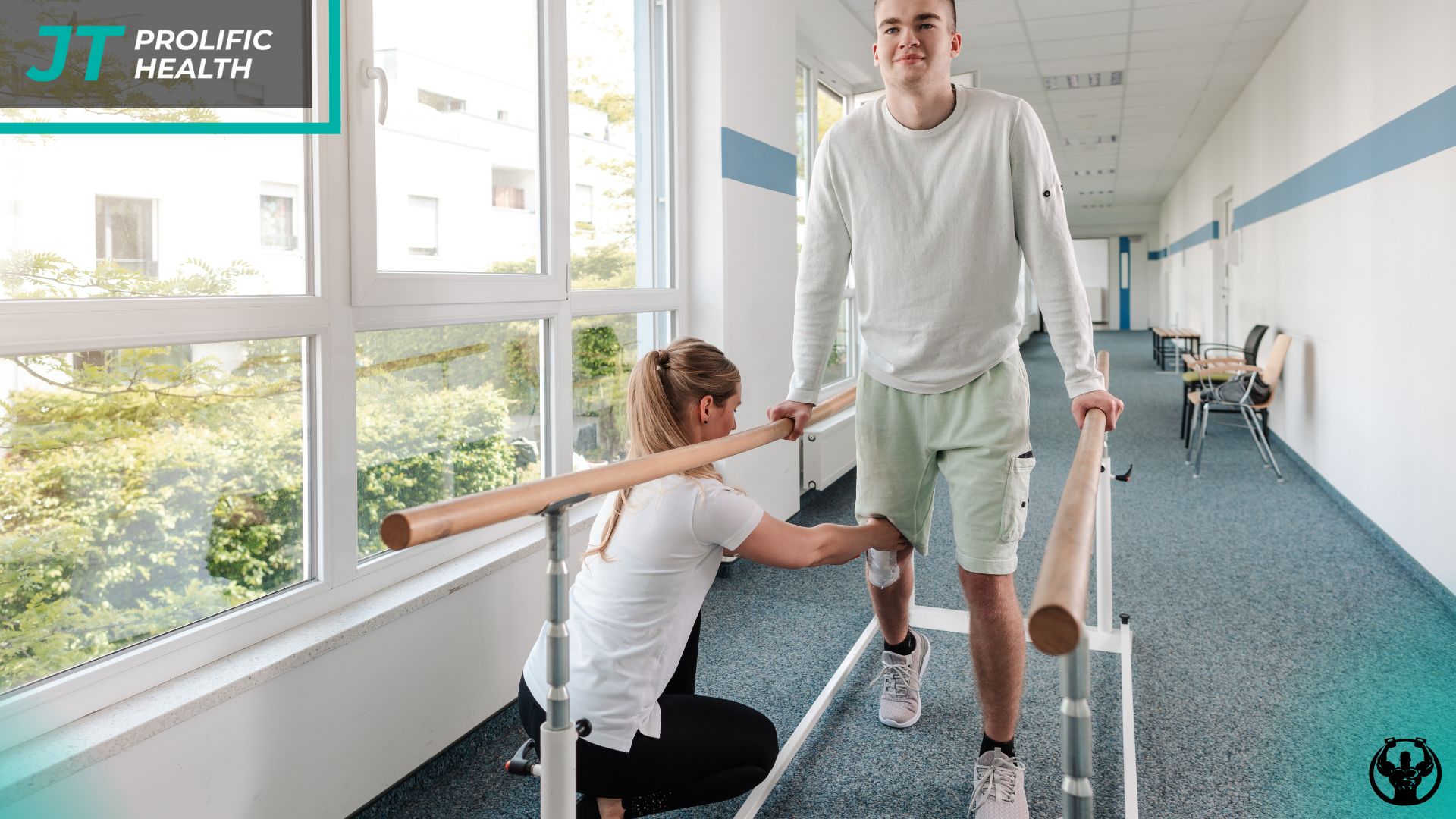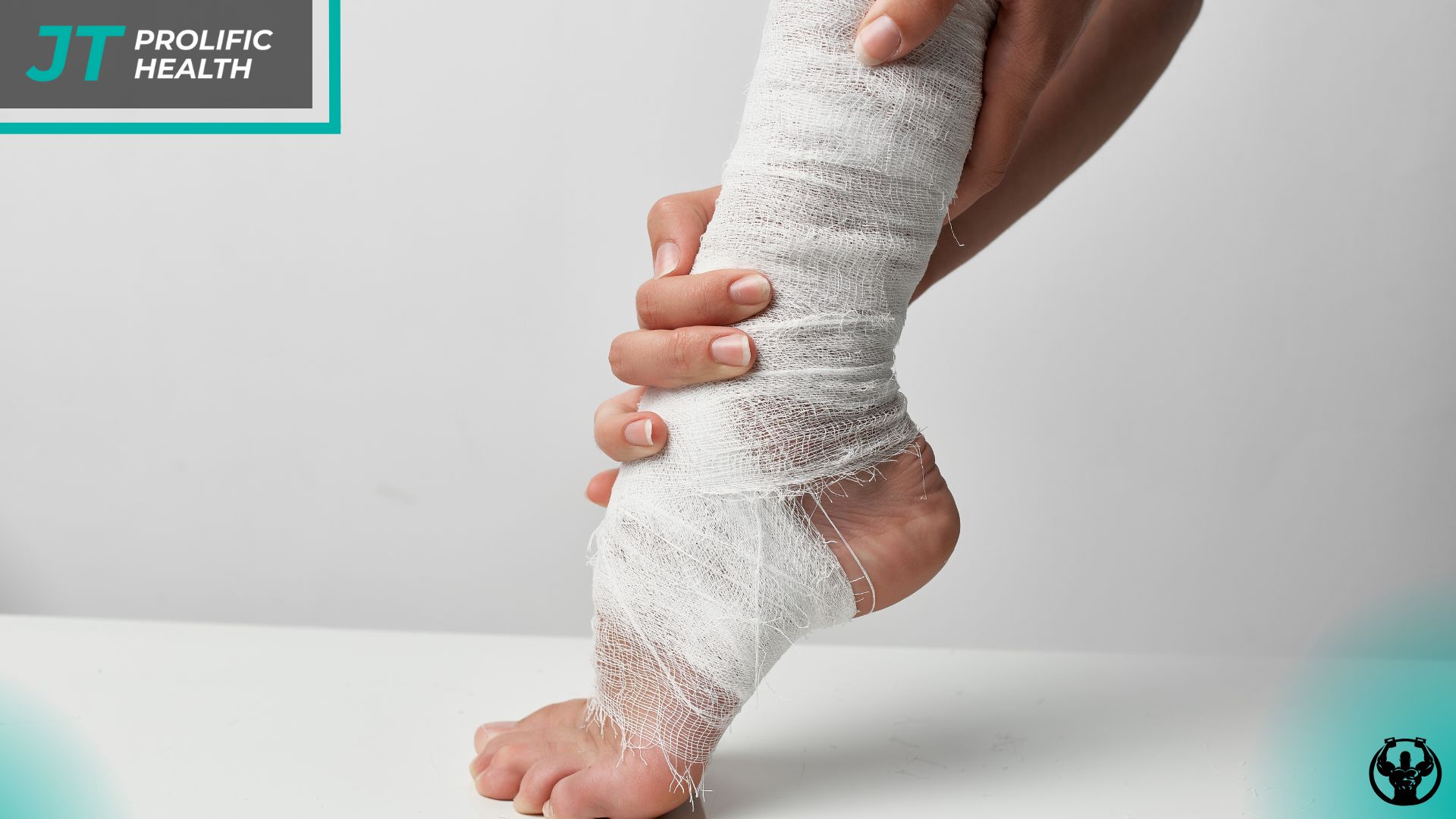Recovering from an injury can feel like an overwhelming journey, especially when you’re eager to return to your normal activities and fitness routine. In Vancouver, where an active lifestyle is deeply ingrained in the culture, being sidelined by an injury can be particularly frustrating. Whether you’re dealing with a sports-related injury, workplace incident, or the aftermath of an accident, the path back to full mobility and strength requires careful planning, expert guidance, and a structured approach that prioritizes both safety and effectiveness.
Personal trainers specializing in injury recovery have emerged as invaluable allies in this rehabilitation process. Unlike general fitness instructors, these professionals possess specialized knowledge about anatomy, biomechanics, and the healing process that allows them to design programs specifically tailored to your injury and recovery stage. They understand that rehabilitation isn’t simply about getting back to where you were before – it’s about building a stronger, more resilient body that’s better equipped to prevent future injuries.
The role of a qualified personal trainer in injury recovery extends far beyond simply prescribing exercises. They serve as educators, motivators, and safety monitors throughout your journey. They help you understand your body’s limitations during different phases of healing, teach you proper movement patterns that support recovery, and gradually progress your activities in a way that promotes healing rather than re-injury. This comprehensive approach is particularly valuable in Vancouver’s diverse fitness landscape, where individuals may be recovering from everything from skiing accidents to repetitive strain injuries from desk work.
What makes personal trainer-assisted recovery so effective is the individualized attention and expertise they provide. Every injury is unique, and what works for one person may not be appropriate for another. A skilled trainer will assess your specific condition, work within the parameters set by your healthcare team, and create a customized program that addresses your particular needs, goals, and timeline. This personalized approach significantly increases the likelihood of a successful recovery while minimizing the risk of setbacks or complications.
Key Takeaways
For additional context, see this comprehensive guide.
- Specialized Knowledge: Personal trainers with injury recovery expertise understand the healing process and can design safe, effective rehabilitation programs that complement medical treatment and physical therapy.
- Individualized Programming: Every injury requires a unique approach. Qualified trainers assess your specific condition and create customized exercise protocols that evolve with your recovery progress.
- Movement Re-education: Trainers help you relearn proper movement patterns and biomechanics, which is crucial for preventing re-injury and building long-term resilience.
- Progressive Loading: Professional guidance ensures that tissues are challenged appropriately throughout the healing process, promoting optimal recovery without overwhelming damaged structures.
- Psychological Support: Recovery can be mentally challenging. Trainers provide motivation, encouragement, and help build confidence as you work toward your goals.
- Integration with Healthcare: Experienced trainers work collaboratively with your medical team, ensuring that exercise interventions support rather than interfere with your overall treatment plan.
- Functional Restoration: The focus extends beyond basic healing to restore full function and prepare you for return to sport, work, and daily activities with reduced injury risk.
- Education and Prevention: Trainers teach you about your body, injury mechanisms, and strategies for preventing future problems, empowering you with knowledge for long-term health.
Understanding the Role of Personal Trainers in Injury Recovery

The integration of personal training into injury recovery represents a significant evolution in rehabilitation approaches. Traditional recovery models often focused primarily on pain reduction and basic function restoration through physical therapy alone. However, modern understanding recognizes that optimal recovery requires a more comprehensive approach that bridges the gap between clinical treatment and return to full activity. This is where specialized personal trainers become invaluable members of your recovery team.
Personal trainers working in injury recovery must possess a deep understanding of anatomy, physiology, and the healing process. They need to comprehend how different tissues respond to various types of stress and loading throughout different phases of recovery. This knowledge allows them to design exercise programs that promote healing while avoiding activities that could impede progress or cause re-injury. In Vancouver’s active community, where people are eager to return to hiking, skiing, cycling, and other demanding activities, this expertise is particularly crucial.
The collaborative relationship between personal trainers and other healthcare professionals is fundamental to successful outcomes. Effective trainers maintain open communication with physiotherapists, doctors, and other members of your healthcare team to ensure that exercise interventions align with your overall treatment plan. This coordination helps prevent conflicting approaches and ensures that all aspects of your recovery work synergistically toward your goals.
One of the most significant advantages of working with a qualified trainer during recovery is their ability to provide real-time feedback and adjustments. Unlike following a generic rehabilitation protocol, working with a trainer means having someone who can observe your movement patterns, assess your response to exercises, and make immediate modifications based on how your body is responding on any given day. This dynamic approach is essential because recovery is rarely linear, and flexibility in programming is often necessary to accommodate the natural fluctuations in healing.
The Science Behind Exercise-Based Injury Recovery


Understanding the scientific principles underlying exercise-based injury recovery helps explain why personal trainer involvement can be so beneficial. When tissues are injured, they undergo a complex healing process that involves inflammation, tissue repair, and remodeling phases. Each phase requires different approaches to exercise and loading to optimize healing while preventing complications. Personal trainers with specialized knowledge understand these phases and can adjust training protocols accordingly.
During the initial inflammatory phase, which typically lasts several days to weeks depending on the injury severity, the focus is on protecting the injured tissue while maintaining function in unaffected areas. A knowledgeable trainer will design programs that work around the injury, maintaining cardiovascular fitness and strength in non-injured body parts while respecting the healing process in damaged tissues. This approach prevents the deconditioning that often occurs when people become completely sedentary following an injury.
As healing progresses into the repair phase, controlled loading becomes increasingly important. Research has consistently shown that appropriate mechanical stress promotes tissue healing and remodeling. However, the key word is “appropriate” – too little stress can lead to weak, poorly organized tissue repair, while too much can re-injure tissues or prolong inflammation. Personal trainers with expertise in rehabilitation training understand how to find this optimal loading zone and progress it systematically as healing advances.
The remodeling phase, which can last months or even years depending on the tissue type and injury severity, is where personal trainers can make their most significant impact. During this phase, tissues are adapting to the demands placed upon them, and the quality of this adaptation is heavily influenced by the types of exercises and activities performed. Trainers help ensure that tissues develop the strength, flexibility, and coordination necessary not just for basic function, but for the specific demands of your lifestyle and activities.
Neurological considerations are equally important in injury recovery. Injuries often disrupt normal movement patterns and proprioception (body awareness), leading to compensatory movement strategies that can persist long after tissues have healed. Personal trainers play a crucial role in retraining these movement patterns, helping restore normal neuromuscular control and coordination. This process, known as motor learning, requires repetition, feedback, and progressive challenges – all areas where skilled trainers excel.
Customized Exercise Programming for Different Injury Types


The beauty of working with a qualified personal trainer during injury recovery lies in their ability to create highly individualized programs that address the specific characteristics of your injury. Different types of injuries require dramatically different approaches, and a one-size-fits-all rehabilitation program simply cannot provide optimal outcomes. This is where the expertise of a trainer who understands various injury mechanisms and healing processes becomes invaluable.
Musculoskeletal injuries, such as muscle strains, ligament sprains, and tendon injuries, each require unique programming considerations. For example, muscle strains typically heal relatively quickly but require careful attention to flexibility and gradual strengthening to prevent re-injury. Ligament injuries, on the other hand, heal more slowly and require extensive proprioceptive training to restore joint stability and prevent future sprains. Tendon injuries often require very specific loading protocols that challenge the tendon in particular ways to promote optimal healing and prevent chronic problems.
Spinal injuries present their own unique challenges and require trainers with specialized knowledge of spinal biomechanics and stability. Recovery from back injuries often involves retraining deep stabilizing muscles, addressing movement dysfunction, and gradually building tolerance to various loading patterns. The complexity of spinal rehabilitation makes it particularly important to work with trainers who have specific expertise in this area and understand how to progress exercises safely while respecting the healing process.
Post-surgical recovery represents another specialized area where personal trainers can provide significant value. Whether recovering from arthroscopic procedures, joint replacements, or other surgical interventions, the rehabilitation process must carefully balance the need for movement and strengthening with respect for healing tissues and surgical restrictions. Trainers experienced in post-surgical rehabilitation understand these considerations and can design programs that optimize recovery while adhering to medical guidelines.
Overuse injuries, which are increasingly common in Vancouver’s active population, require a different approach altogether. These injuries often result from repetitive stress, muscle imbalances, or movement dysfunction rather than acute trauma. Recovery typically involves identifying and addressing the underlying causes while gradually building tolerance to the activities that caused the problem. This process requires careful analysis of movement patterns, training loads, and biomechanics – areas where skilled trainers can provide invaluable insights and interventions. For those seeking guidance on finding qualified professionals, learning about evaluating trainer qualifications and expertise can help ensure you’re working with someone capable of handling your specific needs.
Building Confidence and Mental Resilience During Recovery
The psychological aspects of injury recovery are often underestimated, yet they play a crucial role in determining both the speed and completeness of rehabilitation. Injuries can significantly impact confidence, self-efficacy, and mental well-being, particularly for individuals who were previously very active or whose identity is closely tied to their physical capabilities. Personal trainers specializing in injury recovery understand these psychological challenges and play a vital role in helping clients rebuild both physical and mental strength.
Fear of re-injury is one of the most common psychological barriers encountered during recovery. This fear can be so powerful that it prevents individuals from progressing appropriately in their rehabilitation, leading to prolonged disability and reduced quality of life. Skilled personal trainers help address these fears through education, gradual exposure, and building positive experiences with movement and exercise. They create safe environments where clients can test their limits progressively, building confidence with each successful milestone.
The process of rebuilding confidence extends beyond simply performing exercises correctly. It involves helping clients understand their bodies, recognize their progress, and develop realistic expectations about their recovery timeline. Trainers serve as objective observers who can point out improvements that clients might not notice themselves, helping maintain motivation during challenging periods when progress feels slow or imperceptible.
Goal setting becomes particularly important during injury recovery, and personal trainers excel at helping clients establish realistic, achievable objectives that provide direction and motivation. These goals typically progress from basic functional movements to more complex activities, eventually leading back to sport-specific or occupation-specific tasks. The systematic achievement of these progressively challenging goals helps rebuild confidence and provides tangible evidence of recovery progress.
Social support is another crucial element that personal trainers provide during the recovery process. Injury can be isolating, particularly when it prevents participation in previously enjoyed activities or social groups. The regular interaction with a supportive, knowledgeable professional can help maintain social connection and provide emotional support during challenging times. Many clients find that the encouragement and understanding of their trainer becomes a crucial factor in maintaining motivation and adherence to their rehabilitation program. This psychological support is just one of the many ways that working with a personal trainer can significantly boost confidence throughout the recovery journey.
Integration with Healthcare Teams and Medical Professionals
Successful injury recovery rarely occurs in isolation – it requires coordination among various healthcare professionals, each contributing their unique expertise to the rehabilitation process. Personal trainers who specialize in injury recovery understand the importance of working collaboratively with medical doctors, physiotherapists, massage therapists, and other healthcare providers to ensure that all interventions work synergistically toward common goals.
The relationship between personal trainers and physiotherapists is particularly important, as these professionals often work in complementary phases of the recovery process. Physiotherapy typically focuses on the acute phases of injury management, pain reduction, and restoration of basic function. Personal training often becomes more prominent as clients progress toward return to higher-level activities and sport-specific movements. However, there can be significant overlap between these phases, and effective communication ensures smooth transitions and consistent messaging.
Medical clearance and ongoing communication with physicians is essential, particularly for more serious injuries or when clients have underlying health conditions that might affect their recovery. Responsible personal trainers maintain clear boundaries regarding their scope of practice and always defer to medical professionals for diagnosis, treatment decisions, and major modifications to rehabilitation protocols. They serve as additional eyes and ears for the medical team, providing feedback about client progress and any concerns that arise during training sessions.
Documentation and progress tracking become crucial elements when working as part of a healthcare team. Professional trainers maintain detailed records of exercise progression, client responses, and any issues that arise during training. This information can be invaluable for other healthcare providers in making treatment decisions and adjusting their own interventions. Clear communication channels and regular updates help ensure that all team members are working with current, accurate information about the client’s status and progress.
The integration process also involves understanding and respecting the different phases of rehabilitation and knowing when to refer clients back to other healthcare providers. For example, if a client experiences increased pain, develops new symptoms, or shows signs of complications, a knowledgeable trainer will recognize these red flags and facilitate appropriate medical follow-up. This collaborative approach not only ensures client safety but also optimizes outcomes by ensuring that each professional can contribute their expertise at the most appropriate times. For those seeking qualified professionals who understand these collaborative relationships, our guide on finding the best personal trainers can help identify practitioners who work effectively within healthcare teams.
Prolific Health’s Approach to Injury Recovery Training
At Prolific Health, we understand that injury recovery is a complex process that requires specialized knowledge, individualized attention, and a comprehensive approach that addresses both physical and psychological aspects of rehabilitation. Our team of qualified personal trainers brings extensive experience in working with clients recovering from various types of injuries, from acute sports injuries to chronic overuse conditions and post-surgical rehabilitation.
Our approach begins with a thorough assessment that considers not only the specific injury and its current status but also the client’s overall health, fitness level, goals, and lifestyle factors. We work closely with your existing healthcare team to ensure that our exercise interventions complement and support your overall treatment plan. This collaborative approach helps prevent conflicting recommendations and ensures that all aspects of your recovery work together toward optimal outcomes.
We recognize that every injury and every individual is unique, which is why we never use cookie-cutter rehabilitation programs. Instead, our trainers design completely customized exercise protocols that evolve with your recovery progress. We carefully monitor your response to different exercises and activities, making adjustments as needed to ensure that you’re always working within appropriate parameters for your current healing status.
Education is a cornerstone of our approach at Prolific Health. We believe that understanding your injury, the recovery process, and the rationale behind different exercises empowers you to take an active role in your rehabilitation. Our trainers take time to explain what you’re doing, why you’re doing it, and how it contributes to your recovery goals. This educational component helps build confidence and promotes long-term success by giving you the knowledge and tools needed to maintain your progress and prevent future injuries.
Frequently Asked Questions
How soon after an injury can I start working with a personal trainer?
The timing depends on the type and severity of your injury, as well as guidance from your healthcare provider. For minor injuries, modified training might begin almost immediately, focusing on unaffected body parts. For more serious injuries, it’s typically best to wait until you have medical clearance and have completed initial treatment phases. Always consult with your doctor or physiotherapist before beginning any exercise program after an injury.
What qualifications should I look for in a personal trainer for injury recovery?
Look for trainers with specialized certifications in corrective exercise, rehabilitation, or medical fitness. Important credentials include certifications from organizations like NASM, ACSM, or specialized programs in corrective exercise. Experience working with your specific type of injury is also valuable. Understanding essential trainer certifications can help you make an informed choice.
Will working with a personal trainer replace my physiotherapy?
No, personal training typically complements rather than replaces physiotherapy. These services often work together in different phases of recovery, with physiotherapy focusing on acute treatment and basic function restoration, while personal training helps bridge the gap to full activity return. Your healthcare team can help determine the appropriate timing and combination of services.
How long does injury recovery training typically take?
Recovery timelines vary greatly depending on the injury type, severity, your overall health, and adherence to the program. Minor injuries might require only a few weeks of modified training, while major injuries or surgeries could require months of progressive rehabilitation. Your trainer will work with you to establish realistic timelines and milestones.
What should I do if I experience pain during recovery training?
Some discomfort during rehabilitation is normal, but sharp pain or significant increases in pain levels should be addressed immediately. Stop the activity and inform your trainer, who can assess the situation and determine if modifications are needed or if you should consult with your healthcare provider.
Can personal training help prevent future injuries?
Absolutely. One of the key benefits of working with a qualified trainer during recovery is learning proper movement patterns, identifying and addressing muscle imbalances, and building strength and stability that can help prevent future injuries. Many clients continue working with trainers after recovery specifically for injury prevention.
How do I know if my personal trainer is working effectively with my healthcare team?
Effective trainers will ask about your medical treatment, request relevant medical information, communicate with your healthcare providers when appropriate, and adjust their programming based on medical recommendations. They should also recognize when issues arise that require medical attention and facilitate appropriate referrals. Being aware of potential red flags in trainer selection can help ensure you’re working with a professional who understands these collaborative relationships.
What lifestyle changes might be recommended during injury recovery?
Recovery often involves temporary or permanent modifications to daily activities, sleep habits, nutrition, stress management, and exercise routines. Your trainer can help identify activities that might interfere with healing and suggest alternatives that support your recovery goals. For comprehensive information about lifestyle modifications that support recovery, professional guidance can be invaluable in making sustainable changes that promote healing.
Conclusion
The journey from injury back to full function and activity is rarely straightforward, but working with a qualified personal trainer who specializes in injury recovery can make a profound difference in both the speed and quality of your rehabilitation. These professionals bring specialized knowledge, individualized programming, and ongoing support that bridges the gap between medical treatment and return to your desired activities.
The integration of personal training into injury recovery represents a comprehensive approach that addresses not only the physical aspects of healing but also the psychological challenges that often accompany injury. Through careful assessment, progressive programming, and ongoing education, skilled trainers help clients rebuild both physical capabilities and confidence, setting the foundation for long-term success and injury prevention.
As Vancouver’s active community continues to seek effective solutions for injury recovery, the role of specialized personal trainers becomes increasingly important. Their ability to work collaboratively with healthcare teams, provide individualized attention, and adapt programming based on real-time feedback makes them invaluable allies in the recovery process. Whether you’re dealing with a minor setback or recovering from a major injury, the right personal trainer can help ensure that you not only return to your previous level of function but emerge stronger and more resilient than before.
The investment in professional guidance during injury recovery pays dividends far beyond the immediate rehabilitation period. The knowledge, movement patterns, and habits developed during this time often serve individuals well for years to come, contributing to better overall health, reduced injury risk, and enhanced quality of life. In a city where outdoor activities and active lifestyles are central to many people’s identity and well-being, having access to qualified professionals who understand the complexities of injury recovery is not just beneficial – it’s essential for maintaining the active lifestyle that makes Vancouver such a special place to live.


